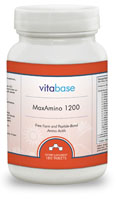| Vitamins & health supplements guide | Supplements Store: Buy the Best Quality Vitamins and Supplements |
||
| |
|||
|
|
| All articles on this site are for general information only. We're committed to keeping the information accurate, however, we can not ensure the accuracy of all the information. Please always seek professional medical advices for your health concerns. © 2005-2006, Vitamin Supplements Guide, all rights reserved. |
